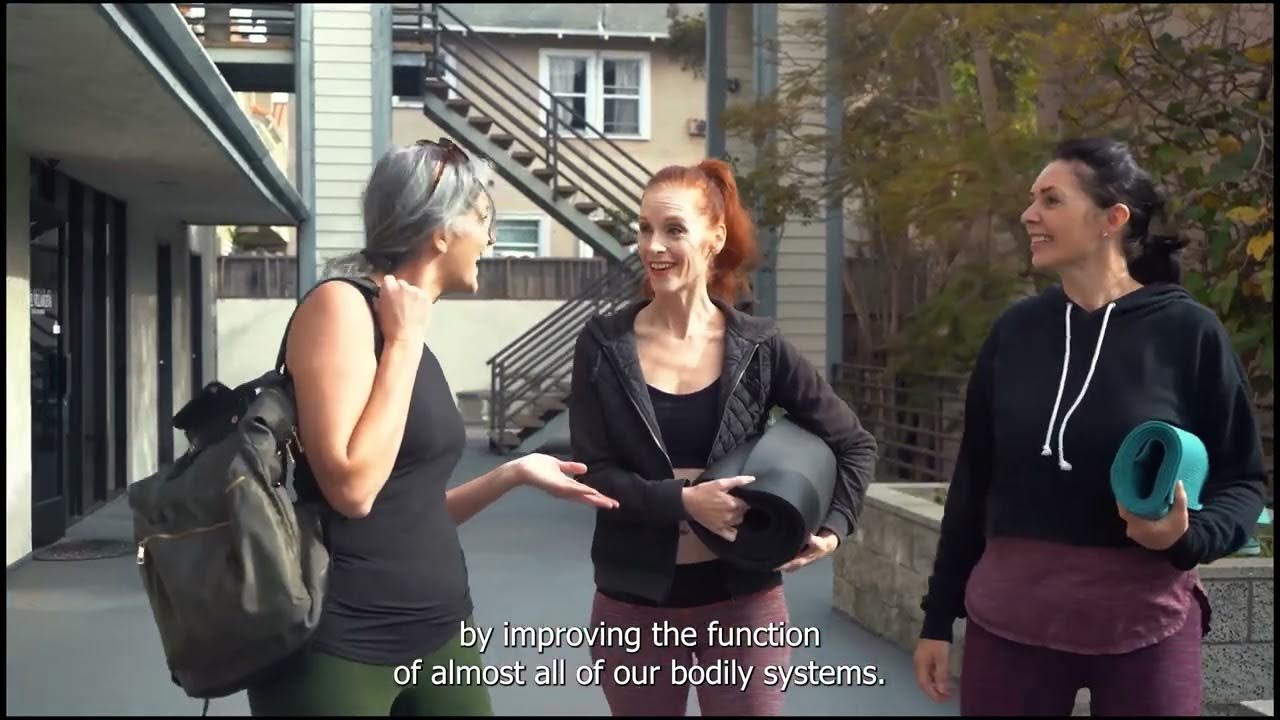MOVEMENTS - Physical Education
Summary
TLDRThe video script from 'Movements' introduces the concept of physical activity as any body movement that expends energy, excluding rest. It highlights the benefits of physical activity for a better quality life, including weight control, improved mental health, and reduced risks of chronic diseases. The script delves into fundamental body movements and their importance in physical education and daily life, explaining the distinction between locomotor movements, which involve body travel, and non-locomotor movements, which do not. Examples of each type are provided, emphasizing the role of these movements in enhancing motor skills and overall well-being.
Takeaways
- 🏃 Physical activity is defined as any body movement that requires energy expenditure, excluding restful states like sitting or lying down.
- 💪 Engaging in physical activity offers numerous benefits, such as improving the quality of life, aiding in weight control, and enhancing mental health.
- 🦴 It strengthens bones and muscles, which is crucial for maintaining overall physical fitness.
- 🚶♂️ Fundamental body movements like walking, running, stretching, bending, catching, and throwing are essential motor skills and the foundation of physical education and daily activities.
- 🏋️♂️ Motor skills are developed from an early age and can be further enhanced through instruction, contributing to the quality of physical education and daily life.
- 🔄 Locomotor movements are those that cause the body to travel from one place to another, and they are categorized into even and uneven movements.
- 🔁 Even movements involve equal and opposite actions, while uneven movements consist of equal actions and may include alternating actions.
- 🚶♀️ There are eight main locomotor movements, which are fundamental to various games and activities.
- 🤸♂️ Non-locomotor movements, also known as actual movements, involve parts of the body without causing the body to travel, often combined with locomotor movements for more complex actions.
- 👀 Examples of non-locomotor movements include swinging arms back and forth, which can be seen in conjunction with walking.
- 📢 The video encourages viewers to like and subscribe to the YouTube channel for more educational content.
Q & A
What is physical activity defined as in the script?
-Physical activity is defined as any movement of the body that requires energy expenditure, excluding sitting still or lying down.
What are some examples of physical activities mentioned in the script?
-Examples include walking to class, taking the stairs, and cleaning your house.
What are the benefits of physical activity as outlined in the script?
-Benefits include a better quality of life, weight control, strengthening of bones and muscles, improved mental health, mood, and energy levels, as well as reduced risk for cardiovascular disease, type 2 diabetes, certain cancers, and other chronic health conditions.
What are fundamental body movements according to the script?
-Fundamental body movements include walking, running, stretching, bending, catching, and throwing.
Why are fundamental body movements important in physical education and daily life?
-They are important because they are the building blocks of all games and activities in physical education, sports, and daily life, enhancing the quality of motor skills and the activities in which students engage.
What are motor skills and how are they developed?
-Motor skills are actions that require the use of muscles in specific ways to achieve a desired outcome. They are learned and developed from an early age and can continue to develop through instruction.
What are locomotor movements and how are they categorized in the script?
-Locomotor movements are body movements that move the body from one place to another, causing the body to travel. They are categorized as either even or uneven movements.
What distinguishes even locomotor movements from uneven locomotor movements?
-Even locomotor movements consist of equal and opposite actions, while uneven movements consist of a single action without a corresponding opposite action.
Can you provide some examples of even locomotor movements from the script?
-The script does not provide specific examples of even locomotor movements, but they would include movements like skipping or hopping, which involve equal and opposite actions.
What are non-locomotor movements and how do they differ from locomotor movements?
-Non-locomotor movements are movements of certain body parts or the whole body without causing the body to travel, such as swinging your arms back and forth. They differ from locomotor movements in that they do not result in the body's displacement.
How are non-locomotor movements often combined with locomotor movements?
-Non-locomotor movements are often combined with locomotor movements to enhance the overall movement, such as walking while swinging your arms.
What is the closing statement of the video script?
-The closing statement encourages viewers to like and subscribe to the YouTube channel, with a thank you and a blessing.
Outlines

This section is available to paid users only. Please upgrade to access this part.
Upgrade NowMindmap

This section is available to paid users only. Please upgrade to access this part.
Upgrade NowKeywords

This section is available to paid users only. Please upgrade to access this part.
Upgrade NowHighlights

This section is available to paid users only. Please upgrade to access this part.
Upgrade NowTranscripts

This section is available to paid users only. Please upgrade to access this part.
Upgrade NowBrowse More Related Video
5.0 / 5 (0 votes)





